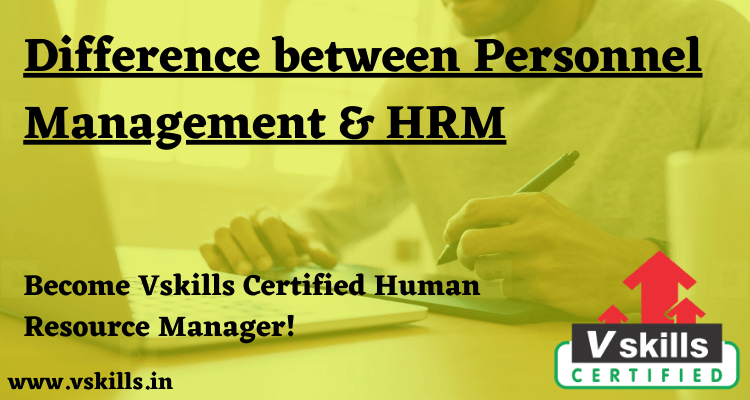Difference between Personnel Management & HRM- Many students of management and laypeople often hear the term HR or Human Resource Management and wonder about the difference between HR and the traditional term Personnel Management. In earlier times, the Personnel Manager of a factory or firm was the person in charge of ensuring employee welfare and interceding between the management and the employees. In recent times, the term has been replaced with the HR manager. This article looks at the differences in usage and scope of functions as well as the underlying theory behind these nomenclatures. In the section on introducing HRM, we briefly looked at the main differences. We shall look into them in more detail here.
Personnel Management
Traditionally the term personnel management was used to refer to the set of activities concerning the workforce which included staffing, payroll, contractual obligations and other administrative tasks. In this respect, personnel management encompasses the range of activities that are to do with managing the workforce rather than resources. Personnel Management is more administrative in nature and the Personnel Manager’s main job is to ensure that the needs of the workforce as they pertain to their immediate concerns are taken care of. Further, personnel managers typically played the role of mediators between the management and the employees and hence there was always the feeling that personnel management was not in tune with the objectives of the management.
Human Resource Management
With the advent of resource-centric organizations in recent decades, it has become imperative to put “people first” as well as secure management objectives of maximizing the ROI (Return on Investment) on the resources. This has led to the development of the modern HRM function which is primarily concerned with ensuring the fulfillment of management objectives and at the same time ensuring that the needs of the resources are taken care of. In this way, HRM differs from personnel management not only in its broader scope but also in the way in which its mission is defined. HRM goes beyond the administrative tasks of personnel management and encompasses a broad vision of how management would like the resources to contribute to the success of the organization.
| Criteria | Personnel Management | HRM (Human Resource Management) |
|---|---|---|
| Focus | Administrative tasks and employee welfare | Strategic management of employees |
| Scope | Limited to recruitment, selection, and payroll management | Broad, covering recruitment, selection, training and development, performance management, and succession planning. |
| Nature of relationship | Employers – Employees | Collaborative and mutual benefit for both employers and employees |
| Role of HR manager | Limited to administrative tasks | Broad, strategic, and operational roles |
| Employee motivation | Maintaining employee satisfaction | Motivating employees for better performance and engagement |
| Communication | Top-down, one-way communication | Two-way communication to build relationships and promote collaboration |
| Approach | Reactive, focused on resolving issues as they arise | Proactive, focused on preventing problems and creating a positive work environment |
| Technology use | Limited use of technology | High use of technology to streamline processes and improve efficiency |
| Employee involvement | Minimal employee involvement | Employee involvement and empowerment are encouraged |
Practice Questions
Q1. What is the primary difference between Personnel Management and HRM?
A) Personnel management focuses on strategic management, while HRM focuses on administrative tasks.
B) Personnel management is a traditional approach, while HRM is a modern approach.
C) Personnel management focuses on managing individuals, while HRM focuses on managing people as assets.
D) Personnel management and HRM are the same thing.
Correct Answer: B) Personnel management is a traditional approach, while HRM is a modern approach.
Q2. Which of the following is a feature of Personnel Management?
A) It focuses on managing people as assets.
B) It emphasizes employee development and training.
C) It is a more modern approach.
D) It primarily deals with administrative tasks.
Correct Answer: D) It primarily deals with administrative tasks.
Q3. Which of the following is a feature of HRM?
A) It is a traditional approach.
B) It focuses on managing people as assets.
C) It primarily deals with administrative tasks.
D) It does not consider the strategic goals of the organization.
Correct Answer: B) It focuses on managing people as assets.
Q4. What is the primary goal of Personnel Management?
A) To develop and train employees.
B) To ensure compliance with legal requirements.
C) To focus on the strategic management of people.
D) To manage administrative tasks such as hiring, compensation, and benefits.
Correct Answer: D) To manage administrative tasks such as hiring, compensation, and benefits.
Q5. What is the primary goal of HRM?
A) To focus on the strategic management of people.
B) To manage administrative tasks such as hiring, compensation, and benefits.
C) To ensure compliance with legal requirements.
D) To develop and train employees.
Correct Answer: A) To focus on the strategic management of people.



